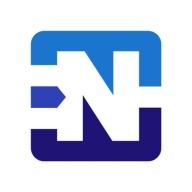


Netgate pfSense and Sophos XG are competitors in the network security category. Netgate pfSense appears to have an advantage in terms of cost-effectiveness and open-source flexibility, whereas Sophos XG excels in providing advanced security features.
Features: Netgate pfSense offers customization options, low resource usage, and an open-source model. Its VPN features are comprehensive, and it is supported robustly by a community. Sophos XG stands out for its advanced threat protection, integrated firewall functionalities, and detailed security report capabilities.
Room for Improvement: Netgate pfSense could improve its interface for beginners, central management, and integration with other systems. Enhancing security functionalities could also be beneficial. Sophos XG should enhance third-party product integration, offer greater pricing transparency, and improve its SD-WAN features.
Ease of Deployment and Customer Service: Netgate pfSense is easy to deploy due to its open-source nature and community support, but formal paid support from Netgate is rated lower. Sophos XG includes customer support with license, which is praised for making deployment straightforward for users needing professional assistance.
Pricing and ROI: Netgate pfSense is highly cost-effective offering enterprise-level features at no licensing cost, with primary costs from hardware and optional support contracts, ensuring low total cost and high ROI. Sophos XG is slightly more expensive with comprehensive protection features and bundled licensing but provides strong security justifying its cost.
Clients are now comfortable and not wasting productive hours on IT support.
The automation part is giving us a cost benefit and speed; we can react faster.
It's a very useful tool to mitigate and protect your enterprise.
If they can save their data from attackers then it would save them at least two days of not working plus the cost of recovery, which would be much more than the cost of the system and maintenance.
Since the memory leak fixes, it's been incredibly stable and requires minimal maintenance.
In four years of using it, that payment of 189 dollars per year has already paid off.
The graphical interface of Sophos XG simplifies configurations, saving time in support and troubleshooting compared to the Linux-based solution I previously used.
We purchased endpoint security for the first time last year, and even without endpoint security, it provides comprehensive security.
It's good, but I would still say it's higher by about 10-15 percent compared to other market products with similar configurations.
They offer very accurate solutions.
The quick resolution of issues with Fortinet FortiGate is due to the support of the company and the fact that the equipment is easy to work with.
I would rate the technical support for Fortinet FortiGate a ten out of ten.
When I provide detailed information about the problem, they've been able to reply quickly with a solution or go research the problem and get back to us quickly with a fix.
They are highly responsive.
I couldn't imagine having better support.
They are professional, respond quickly, and help resolve issues effectively.
I rate the technical support a ten out of ten.
Their team was quick to diagnose and resolve the problem by exchanging the equipment within two weeks.
They scale up really well from smaller models like the FortiGate 40 and 50 to bigger sites with the FortiGate 100 for more throughput - up to enterprise datacenters.
The variation comes in terms of the interfaces and throughputs, but from a security perspective, you get the same benefit, irrespective of whether you have an entry-level unit or an enterprise.
We determine sizing based on multiple factors: number of users, available links, traffic types, server count, services in use, and whether services will be published.
If I put things into a certain context and say that we have a network that has around 100 people, then you don't put up a device that can manage 100 people. Instead, you need to get a device that can manage 150 to 200 people, and then you can create room for growth.
I don't think Netgate pfSense can offer much scalability for big enterprises.
Even with a jump from a 50 megabit to a 500 megabit internet connection and approximately 65 active VPN clients, our firewall operates smoothly without any strain.
You can scale up to multiple firewalls with centralized management.
You can't upgrade memory or storage on a specific model, which limits scalability.
I rate the scalability a nine out of ten.
We're experiencing 99.999% availability consistently.
I would rate the stability of Fortinet FortiGate a ten out of ten.
Currently, we are experiencing a general outage of one of the main internet service providers of the Dominican Republic, and we have not been impacted in our operations because with SD-WAN, we have another internet service provider and we are working with the second WAN connection without any disruption.
I rate the solution's stability a ten out of ten.
I've noticed a substantial improvement in stability and ease of use for upgrades and patching over the past year or two.
When I replace consumer routers with pfSense for small businesses with two or three employees, they are often amazed to discover the router can run for a year without a reboot.
Sophos XG is very stable, even when serving as a DHCP server.
Sophos XG is resource-greedy, affecting performance even on newer computers.
It's on 24/7 and has consistently been reliable over the years.
Investing in a solution that can accommodate such growth would be more cost-effective than repeatedly purchasing new hardware.
While Fortinet claims to offer a comprehensive network solution, it falls short in addressing computer application issues, particularly server security.
When considering Sophos XG, which we also use, the logging and reporting functionality is notably more efficient.
There is some trade-off between having a certain level of security and maintaining acceptable performance.
If I need to go between different VLANs, I have VLAN 19.1 and VLAN 19.2, and I strictly use Netgate pfSense, but it doesn't route very efficiently and works quite slowly.
They should support the idea of configuration management as code from source code and provide a more robust API for managing the pfSense configuration.
The solution should have the ability to be up to date with the most recent threats.
This suggests a vulnerability that needs addressing to ensure administrators can update patches without losing access.
Business cannot stop just because of issues with support.
Last year, I renewed the support for three years, which can sometimes be expensive but depends on the security benefits and how it helps us.
It offers cost savings as it is generally cheaper than the competition.
It is about 20% cheaper.
The price of setup is approximately €500 to €800, which also includes the initial monitoring.
You can acquire a decent embedded PC for around a hundred dollars and install pfSense on it, effectively creating a robust firewall solution.
The product is free of cost.
I rate the pricing a ten out of ten.
Currently, it costs about four million shillings in Kenya.
The cost depends on the package you are in, such as full threat management or basic.
In terms of security, we have not experienced any security flaws or loopholes, and it has proven to be quite stable.
FortiGate has helped reduce the risk of cyberattacks that might disrupt our client's production.
These features help reduce our downtime, manage the ISPs, and deploy SLAs for all the website traffic.
We had downtime before pfSense. We've never gone down using the solution.
It is very stable, and it works very well.
With pfSense, network configurations adhere to standard practices, facilitating troubleshooting without the need for complex overlays or policies.
I particularly like the visibility it provides into network traffic, allowing us to identify and address issues efficiently.
The firewall feature of Sophos XG has been the most effective for threat prevention.
Integration with endpoint security products ensures seamless traffic flow and rule enforcement, even when endpoints are not directly connected to the firewall.
| Product | Market Share (%) |
|---|---|
| Fortinet FortiGate | 20.4% |
| Netgate pfSense | 10.8% |
| Sophos XG | 9.6% |
| Other | 59.2% |



| Company Size | Count |
|---|---|
| Small Business | 350 |
| Midsize Enterprise | 130 |
| Large Enterprise | 187 |
| Company Size | Count |
|---|---|
| Small Business | 166 |
| Midsize Enterprise | 33 |
| Large Enterprise | 28 |
| Company Size | Count |
|---|---|
| Small Business | 140 |
| Midsize Enterprise | 52 |
| Large Enterprise | 35 |
Fortinet FortiGate excels in providing integrated VPN, firewalling, and Unified Threat Management (UTM) with centralized management and high availability. It supports remote access and comprehensive threat protection, making it a preferred choice for securing networks.
Fortinet FortiGate offers a robust security platform with features such as strong intrusion prevention, application control, and web filtering. Its integration with Active Directory and SD-WAN functionality provides scalable solutions for large networks. Users appreciate its ease of use through centralized management interfaces, ensuring robust security with flexible configurations. However, FortiGate could enhance its graphical interface and technical support responsiveness, address firmware bugs and costly licensing, improve logging, integrate better with third-party tools, and strengthen scalability and memory for log storage. Complexity in configuration and the need for intuitive features are noted challenges, and there's a demand for advanced security, zero-trust capabilities, and AI integration.
What are the key features of Fortinet FortiGate?Fortinet FortiGate is widely implemented across industries like education, finance, and government. Companies use it for firewall protection, VPN, and SD-WAN capabilities, ensuring secure perimeter and data center security. It facilitates remote access management and traffic routing optimization, offering reliable security and connectivity solutions.
Netgate pfSense is widely leveraged by organizations for its comprehensive capabilities in firewalls, VPN servers, and bandwidth management. It suits LAN, WAN, and DMZ networks, offering secure, scalable, and efficient networking solutions.
Netgate pfSense stands out in diverse environments with its enterprise-grade features and cost-effective operations compared to competitors like Cisco. Deployed as an edge device, it optimizes routing, ad-blocking, content filtering, and traffic shaping. Users benefit from its versatile configurations, robust firewall protection, VPN functionality, and ISP load balancing. The open-source nature allows for extensive customization, integrating plugins like Snort and pfBlockerNG, and compatibility with third-party tools enhances its utility. The intuitive GUI combined with detailed logging and centralized management fortifies network security.
What features define Netgate pfSense?
What benefits should be considered for ROI?
Organizations in industries such as finance, healthcare, and education find Netgate pfSense integral due to its advanced security features and cost benefits. Its scalable architecture and strong VPN support are crucial for industries requiring stringent data protection and reliable remote access. The adaptability of pfSense makes it suitable for dynamic environments seeking comprehensive, secure networking solutions.
Sophos XG provides robust security capabilities, offering features like web filtering, VPN, and user-friendly management. Its intuitive setup and policy adjustments enhance security while synchronized endpoint protection ensures comprehensive defense.
Sophos XG is a network security solution with web and application filtering, VPN features, and a management interface that simplifies configuration. It offers email protection, threat prevention, and reporting capabilities, all contributing to a comprehensive defense strategy. Synchronized security with endpoints enhances protection, and advanced threat protection with efficient bandwidth management supports secure remote work environments. However, users suggest improvements in log interfaces for real-time actions and better email protection. Enhancements in link load balancing, RAM, VPN stability, and central management are needed. HTTPS filtering, certificate management, technical support, and scalability of the SD-WAN feature can see advances.
What are the key features of Sophos XG?In industries such as healthcare, education, and financial services, Sophos XG acts as a mainline defense for network security, VPN connectivity, and web filtering. It supports secure remote access, intrusion prevention, antivirus scanning, and secure web gateways integrated with endpoint systems, tailoring its extensive security capabilities to meet specific industry requirements.
We monitor all Firewalls reviews to prevent fraudulent reviews and keep review quality high. We do not post reviews by company employees or direct competitors. We validate each review for authenticity via cross-reference with LinkedIn, and personal follow-up with the reviewer when necessary.